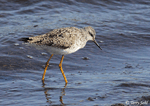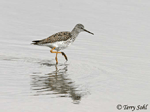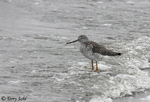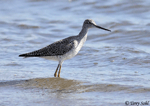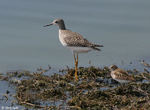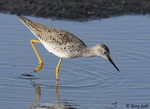|
Lesser Yellowlegs |
|
Greater Yellowlegs |
|
Tringa flavipes |
|
Tringa melanoleuca |
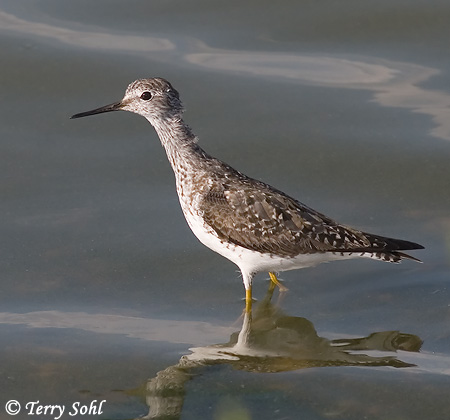
|
|
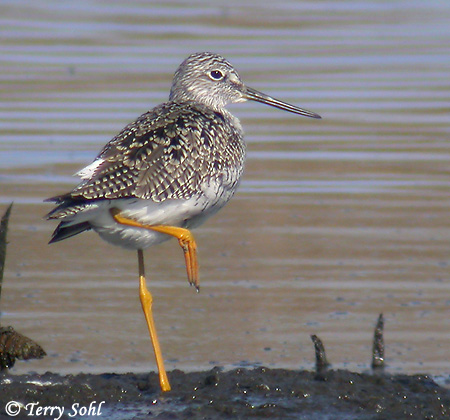
|
|
Lesser and Greater Yellowlegs can be difficult to distinguish, especially when
seen individually. Bill characteristics and differences in flight
call are typically the most reliable means for differentiating between the two
species. |
|
Length: 10 to 11 inches |
|
Length: 14-15 inches |
|
Wingspan: 24 inches |
Wingspan: 28 inches |
|
Bill: Shorter, straight bill, about the size of the head width. |
Bill: Longer bill, noticeably longer than head width, and
slightly upturned towards end. |
|
Call: Short, mellow repeating tew-tew, often only
repeated 2 or 3 times. |
Call: Louder, harsher whee-whee-whee, usually 3 to 5
notes. |
|
Body: More delicate in appearance |
Body: Appears more compact. Typically has more dark barring on
flanks. |
|
South Dakota Status: Typically more common in South Dakota. |
South Dakota Status: Less common than Lesser Yellowlegs, more
difficult to approach (and photograph!!). They seem to tolerate cold
weather slightly better than the Lesser Yellowlegs, and early spring or late
fall birds are more likely to be Greater Yellowlegs. |
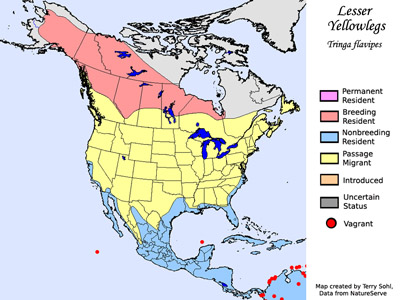 |
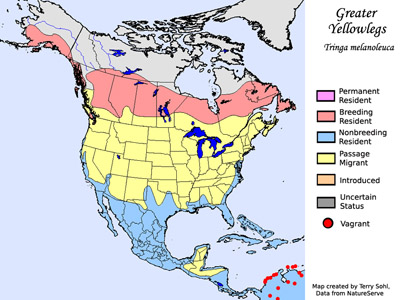 |



